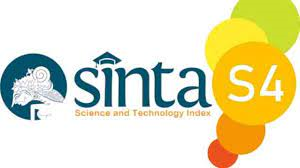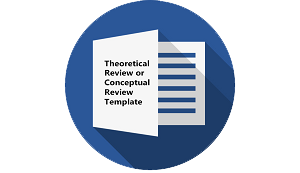THE ANALYSIS OF VLOGGING-PRONUNCIATION ERROR BY THE STUDENTS OF TEGAL POLTEKKES KEMENKES NURSING PROGRAM
DOI:
https://doi.org/10.30957/ijoltl.v7i3.704Keywords:
Error Analysis, Nursing Students, VloggingAbstract
The purpose of the research is to analyze the error pronunciation made by students of Poltekkes Kemenkes Semarang Diploma III Nursing Study Program Tegal when the students make a vlog. Vocabularies in the nursing program are certainly different from general English. The English that the students face is related to medical vocabulary. It needs to analyze how the students sound the vocabulary when they make a vlog. A vlog is a video logging used as media for students to practice speaking. This research employed a mixed method combining qualitative and quantitative methods. The qualitative is applied to figure out the analysis of the error made by the students and the quantitative is applied to know how the percentages of the error are. The result of the study shows that several error pronunciations occurred in consonants, vowels, and diphthongs. There are 150 errors in consonants with a percentage is 22,2 and the analyses show that the students produce the sounds/θ/, /ʧ/, /f/, and /k/ inappropriately. Furthermore, it was found that some error pronunciations are on the sound /ɪ/, /ʌ/, and /i/ for vowels and /ie/,/ei/, /oʊ/, and /ai/ for diphthong. Additionally, vlogs could be the media for students to improve their English, particularly productive skills.
Downloads
References
Alzinaidi, M. H., & Latif, M. M. (2019). Diagnosing Saudi Students' English Consonant Pronunciation Errors. Arab World English Journal, 10(4), 180-193.
Anggrarini, N., & Istiqomah, L. (2019). An analysis of pronunciation errors of English consonant sounds produced by English department students. Wacana Didaktika, 11(3), 41-46.
Arab World English Journal (AWEJ) Volume.7 Number.2 June 2016. The University of Jordan Amman, Jordan
Awaliyah, T. (2020). The Effectiveness of Instagram Vlog in Teaching Speaking at the Tenth Grade of SMAN 1 Jenangan Ponorogo in Academic Year 2019/2020 (Doctoral dissertation, IAIN Ponorogo).
Burns. (1999). Collaborative action research for English teachers. UNSW Sydney.
Butler, F. A., & Stevens, R. (1997) Oral languages assessment in the classroom. Theory Into Practice, 36 (4). 214-219.
Dale, Paulette & Lilian Poms. (2005). English Pronunciation Made Simple. New York: Pearson Education, Inc.
Errors Made By The Fourth semester students of English Education Study Program at UNIKA Program Studi Pendidikan Bahasa Inggris FKIP UNIKA St. Thomas
Fidriani, A. J., Prastikawa, E. F., & Adi, A. P. K. (2021). VIDEO VLOG AS TEACHING MEDIA IN IMPROVING THE STUDENTS SPEAKING ABILITY IN PROCEDURE TEXT. Journal of English Education and Linguistics, 2(2), 37-49.
GeylanioÄŸlu and DikilitaÅŸ (2012) Pronunciation Errors of Turkish Learners of English: Conceptualization Theory as a Teaching Method
Haryani, H., Rachmat, A. W., & Rafsanjani, A. (2020). Pronunciation Error in Speaking Performance of Seafarer Students. Marine Science and Technology Journal, 1(1), 38-41.
Hermawan, D. (2021). The Use Of Portrayals For Assessing Nursing Students’ Oral Skill. Jurnal Educatio FKIP UNMA, 7(1), 156-161.
Kalaldeh Raya, June (2016). English Pronunciation Errors by Jordanian University Students
Kitao, S. K., & Kitao, K. (1996). Testing communicative competence (Report No.TM025214). (ERIC Document Reproduction Service No. ED398260)
Kitao, S. K., & Kitao, K. (1996). Testing speaking (Report No.TM025215). (ERIC Document Reproduction Service No. ED398261)
Laila. Rini (2009). “Pengucapan Bunyi Bahasa Inggris oleh Mahasiswa Jurusan Bahasa Inggrisâ€, FKIP-UMS English Department, FKIP- Universitas Muhammadiyah Surakarta
Laia, M. Y. (2020). Students’ Error in Pronouncing Voiced Students’ Error Analysis in Pronounciation Voiced and Voiceless English Consonants. Juenal Education and Development, 8(1), 450-450.
Learner’s Pocket Dictionary. (2008). Fourth Edition. Oxford University Press
Martanti, I. F. R. (2022). Pronunciation Errors in Students’ Vlog Projects. Acitya: Journal of Teaching and Education, 4(1), 252-265.
McMahon, April. (2002). An Introduction to English Phonology. Edinburgh: Edinburgh University Press Ltd.
Munthe, M. V. R. (2019). An Error Analysis in Pronunciation of English Vowels of the Second Semester Students of Teachers Training College of NHU Pematangsiantar. JURNAL STINDO PROFESIONAL, 5(5), 64-76.
Nakamura, Y., & Valens, M. (2001). Teaching and testing oral communication skills. Journal of Humanities and Natural Sciences,3, 43-53.
Rafael, A. M. D. (2019). An analysis of pronunciation errors made by first semester students of English department STKIP CBN. Loquen: English Studies Journal, 12(1), 1-10.
Sembiring, N., & Fiber, Y. A. (2016). An Analysis of Pronunciation Errors made by the Fourth Semester Students of English Education Study Program at UNIKA. Jurnal Suluh Pendidikan, 3(1).
Talukdar, N. I. S. H. A. (2020). The adverse effects of family vlogging on children. International Journal of Research and Analytical Reviews (IJRAR), 7(1), 749-756.
Yusriati, Y., & Hasibuan, S. H. (2019). The Analysis of English Pronunciation Errors by English Education Students of FKIP UMSU. Journal of English Education and Teaching, 3(2), 230-248.
Downloads
Published
How to Cite
Issue
Section
License
Authors who publish with this journal agree to the following terms:
- Authors retain copyright and grant the journal right of first publication with the work simultaneously licensed under a Creative Commons Attribution-ShareAlike 4.0 International License that allows others to share the work with an acknowledgement of the work's authorship and initial publication in this journal.
- Authors are able to enter into separate, additional contractual arrangements for the non-exclusive distribution of the journal's published version of the work (e.g., post it to an institutional repository or publish it in a book), with an acknowledgement of its initial publication in this journal.
- Authors are permitted and encouraged to post their work online (e.g., in institutional repositories or on their website) prior to and during the submission process, as it can lead to productive exchanges, as well as earlier and greater citation of published work (See The Effect of Open Access).












